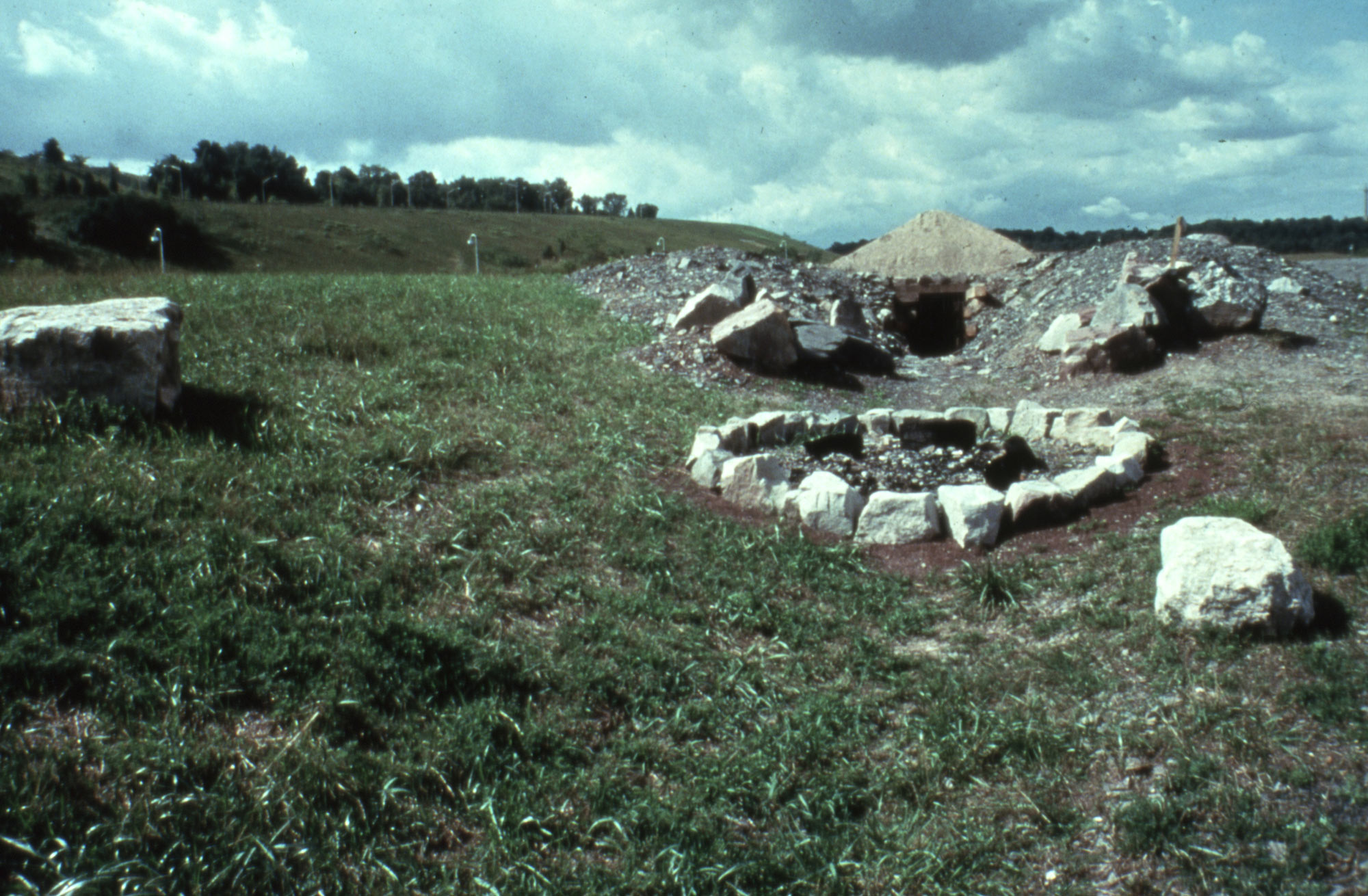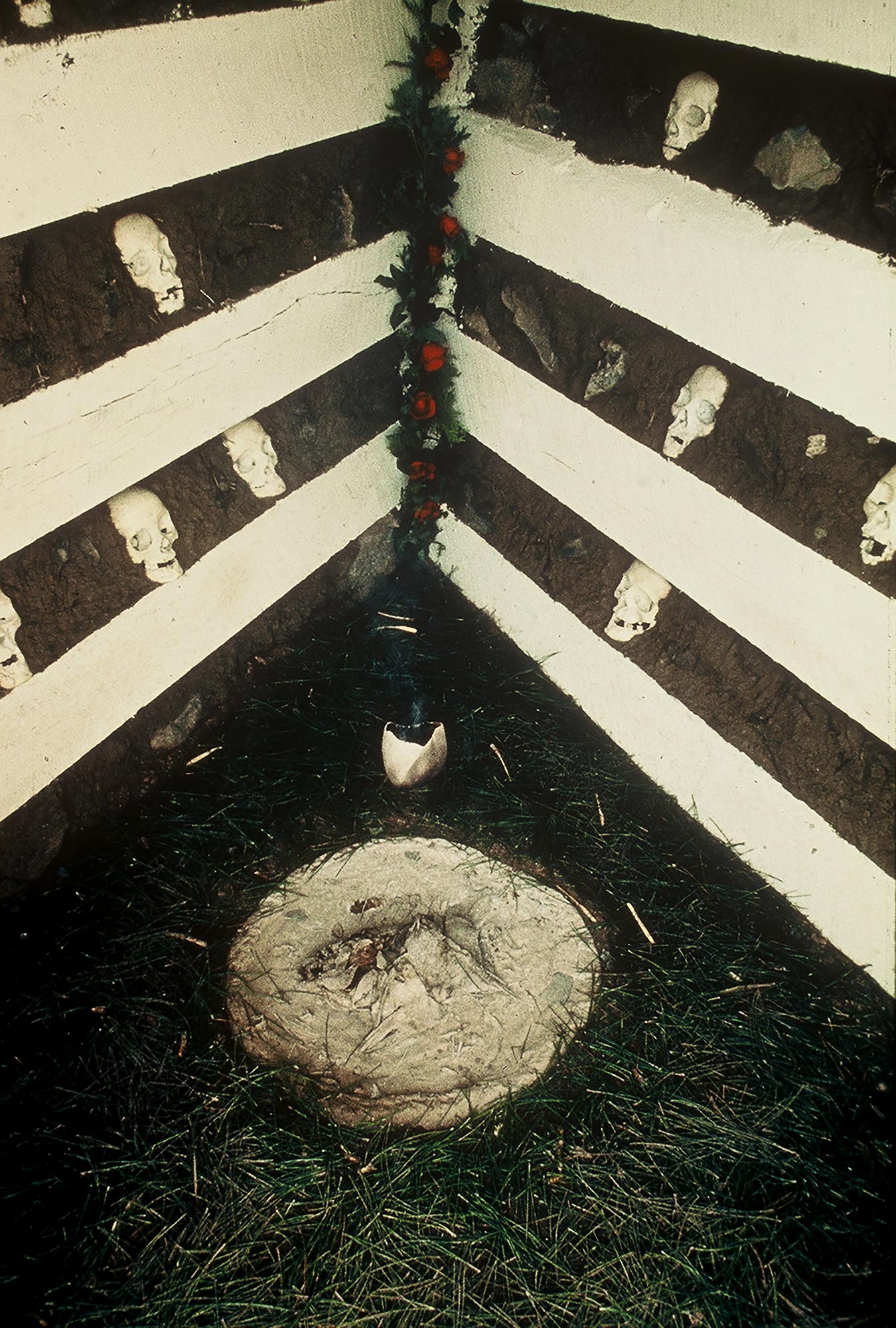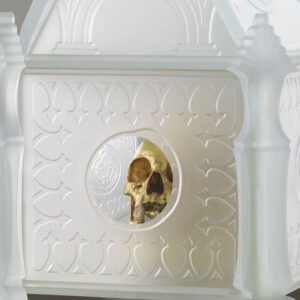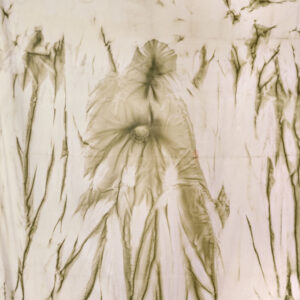Morada 1977

Tim Whiten, Morada, 1977
Site-specific installation and ritual performance, various media (oak and maple beams, 22 human skulls, cedar, roses, pine needles, copal rock, iron gate), 24.38 m long; chamber 213 x 213 x 213 cm
Artpark, Lewiston, New York
Whiten’s early explorations in performance and installation art reflect a wider movement in the 1960s and 1970s, during which artists produced works involving bodily gestures and immersive environments that situated art within the context of everyday life. Morada, one of Whiten’s first installations, was created in 1977 for Artpark, a 108-acre public park in Lewiston, New York, established in 1974 as an experimental forum for temporary outdoor projects concerned with environmental and conceptual issues. Participating artists at this venue included Nancy Holt (1938–2014), Gordon Matta-Clark (1943–1978), Alan Sonfist (b.1946), Alice Aycock (b.1946), Bill Vazan (b.1933), Jody Pinto (b.1942), and Dennis Oppenheim (1938–2011).

Whiten modelled and named his primitive stone and earth installation after the New Mexican adobe dwellings used by a sect of Catholic penitents in the early nineteenth century, drawing inspiration from those sacred sites in his reshaping of the physical environment. Morada was conceived as a series of three ritual stations or experiential stages for the viewer to move through. The first stage was a fire pit surrounded by a ring of boulders, referencing fire as a symbol of sacrifice and transformation. The second stage was a footpath, a 17-foot channel leading to a mound of earth, a tetrahedron above the third stage, which was a subterranean chamber.
Packed between mud, straw, and stone, twenty-two human skulls were embedded into the earthen walls of this underground enclosure. The interior was painted white and framed by wooden beams. A garland of cedar, often used in relationship to purification, and twelve red roses, associated with spiritual passion, hung from the ceiling where the astrological signs of Capricorn and Cancer, representing ascent and descent respectively, were branded into the ceiling. The floor was covered with pine needles, believed to promote healing. A desiccated fish lay in the centre, suggesting rebirth. Copal incense burned inside of a ceramic urn. The entrance of the structure faced east, filling the small chamber with light in the morning, while shadows played across the walls as the day progressed.
During a ritual performance held on August 13, Whiten’s birthday, visitors participated in a procession through Artpark. In a gesture of gratitude and community, they were given an offering of fire-roasted corn by the artist to nourish the soul, a symbol of the harvest and of death and renewal. Concluding the performance, the visitors descended into the chamber by candlelight.
Each morning during this summer residency, Whiten was visited by descendants of the Wendat (Huron) Peoples, contracted to build an “Indian village” nearby. Over coffee, they discussed the concepts informing Morada, the importance of honouring one’s elders and the continued presence of our ancestors, who remain alive within our DNA, our rituals, and our social practices—by virtue of our existence, we participate in their immortality. Having developed a shared understanding of the project’s significance, Whiten recalls that one morning when his work was aborted, these residents arrived with a crew and the equipment needed to help him finish the tasks at hand.

 About the Author
About the Author
 More Online Art Books
More Online Art Books
 Acknowledgements
Acknowledgements